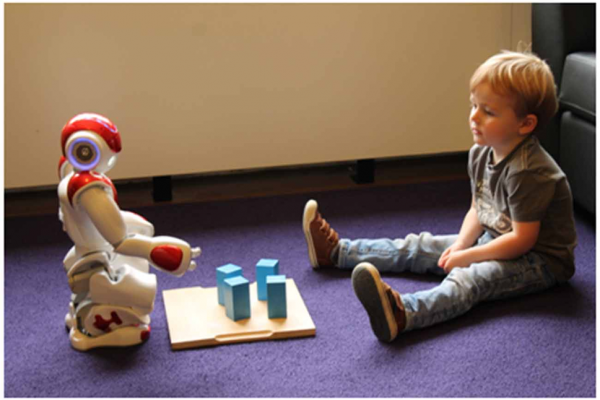Child-Robot Interactions for Second Language Tutoring to Preschool Children
Because young children are more flexible in learning a language, starting to learn a second language in preschool provides a good opportunity for them to learn a second language more fluently at an older age.
Because young children are more flexible in learning a language, starting to learn a second language in preschool provides a good opportunity for them to learn a second language more fluently at an older age.
And there are many forms of digital technologies for PCs, laptops or tablets that support second language learning, although there is little evidence of their effectiveness. While children can benefit from playing with such technologies, these systems lack the situational and visual interactions that young children naturally engage in and learn from.
They believe that children have a positive initial perception of robots that can build trust and a common ground for children to support child-robot interactions in the long run. So their strategy for introducing the robot was as follows: They sent the robot coloring pages to preschoolers and asked teaching assistants to talk to the kids a bit about the robots. About a week after the robot was introduced, an experimenter first introduced the robot by telling a story about Robin (who was their robot name) using a picture book. In this story, they explained the similarities and differences between robots and children. For example, it was said that Robin enjoys dancing and wants to make new friends, and although she has no mouth and therefore cannot smile, she can smile using her eye LEDs.
In this study, the technical challenges they observed were automatic speech recognition (ASR) for children, object recognition, reliability to facilitate semantic necessity and shared attention, and human-like movements with robots that did not have the same morphology as humans.
We briefly address some of the technical challenges of this research:
Monitoring Children’s Behavior
To understand children's communication suggestions, as well as to test their second language pronunciation, it is important that the robot be equipped with automatic speech recognition (ASR). However, the performance of advanced ASR for children is still lower than optimal, especially for preschool children. This is because children's pronunciation is often imperfect and their speech is different from that of adults. The project used internal RFID sensors that can be detected automatically. The second solution they envisioned was to use a touch screen tablet that displays scenes that the child can manipulate, which not only avoids the problem of recognizing objects, but also allows them to respond. Control the robot. And change scenes in real time.
Semantic Contingency
Not only should robots respond to children in a timely manner, but they should also respond in a semantic (ie child-friendly) way, as this can have a positive effect on children's language learning. Understand the child's communication requests, pay attention to the child, or recognize what the child is paying attention to. How to monitor children's behavior and establish a collaborative relationship to design a successful robot teacher.
Joint Attention and Gestures
One way to communicate with children is to use symbolic gestures or gestures to draw attention to a reference. In this case, the morphology of many robots does not match the human body. Hence, human movements cannot be translated directly into robot movements. For example, the Softbank Robotics NAO used in research is a three-fingered hand that cannot control them independently, so access with the index finger is not possible. One of the non-verbal behaviors they use is to paint the robot's eye (LED) to show the robot's happiness as a kind of positive feedback, because the robot can not smile with its mouth.
As a result, this paper provides an overview of some of the design features that make them essential for developing an effective social robot as a second language teacher. The interaction between the child and the robot should be probabilistic and multifaceted and provide appropriate forms of feedback. They argued that the robot should remain in the Vygotsky (1978) development zone and therefore should be adapted to the individual level of the child. These are some of the technical challenges. Discuss what needs to be resolved to implement potential interactions. And they believe that the most important is ASR, which does not work well for children at the moment. While various technical challenges remain, social robots are expected to provide effective digital technologies to support the development of a second language in the coming years.





Related Posts